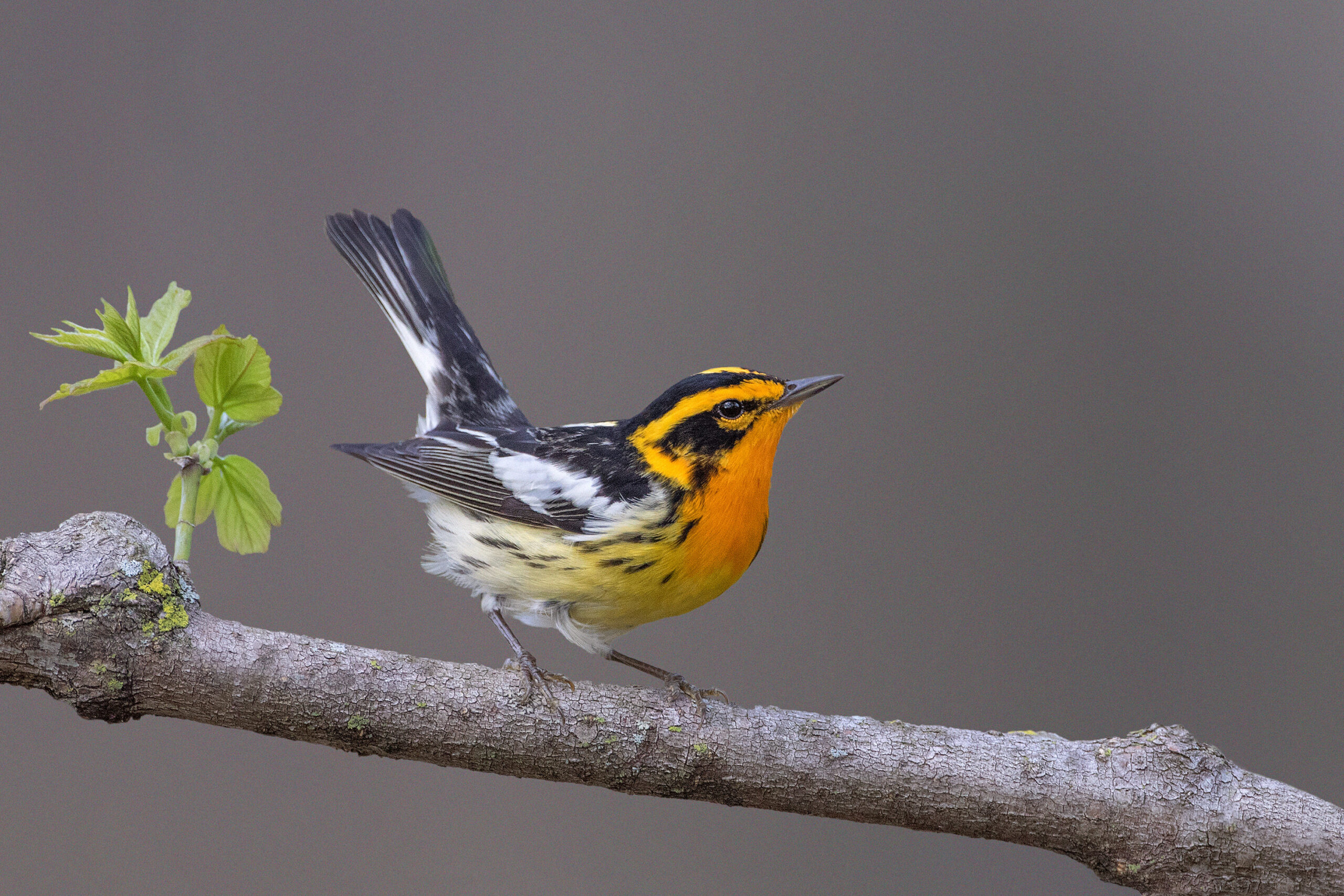It’s warbler time!
Remember last month (April MBH), when we talked about the basics of bird identification, what features to look for on a bird, and other elements such as location or habitat to help you make an identification? Well, it’s time to put those skills into practice. Warblers have started to move northward on migration throughout the state of Michigan! (Admittedly, this is my favorite time of year and group of birds — can you tell?) There are many more Neotropical migratory birds on the move this month as well — it’s an exciting time to get out and bird. Watch for colorful songbirds, raptors on the wing, and shorebirds populating mudflats and shallow water areas. May tends to be the time of peak migration movements; looking ahead to June, most migratory birds will be settled on breeding territories with a mate, where they will raise young for a month or more before turning back south on their annual cyclical journey.
Before we get started, let’s review a few keys to knowing what bird species you are looking at.
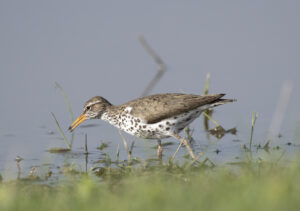
Spotted Sandpiper by Evan Barrientos | Audubon
Shape and size
Specific to warblers, look for small-bodied birds about the same size as an American Goldfinch or Black-capped Chickadee. Those two birds are great for size comparisons, but note that warblers tend to look elongated and sleek, holding their bodies quite differently than the more upright and perky chickadees.
Color and patterns
Look for the general color impression of the bird, as well as patterns. Is the bird primarily black and white like a woodpecker, or is it mostly red like a Scarlet Tanager or Northern Cardinal? Patterns such as wing bars, eye lines, streaking or spots on the breast, and white patches seen in the tail can all help confirm your identification.
Habitat and location
The location where you see a bird usually can help you to identify it (though during migration, sometimes all bets are off!). If you’re in the woods, you likely wouldn’t see a Spotted Sandpiper, but you might see a Northern Waterthrush. Those two species might generally look similar with gray to brown plumage, white breast and bellies with spots or streaks, and a tendency to bob their tails up and down as they walk. Knowing your habitat helps!
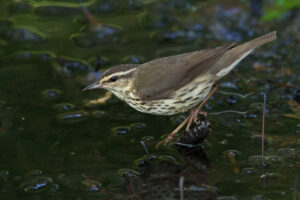
Northern Waterthrush photo by Matthew Pimm | APA
Behavior
Warblers tend to be very active in their behavior, particularly with seeking out food. Whether gleaning caterpillars from the undersides of leaves (Black-throated Blue Warbler), from within bark crevices (Black-and-white Warbler), or actively flushing small, flying insects into the air (American Redstart), warblers tend to move quickly. Compare this to a Yellow-throated Vireo: a species that moves slowly between branches, looking for insects.
Now, let’s try this out with a few example species (correct bird identifications will be at the bottom of this post).
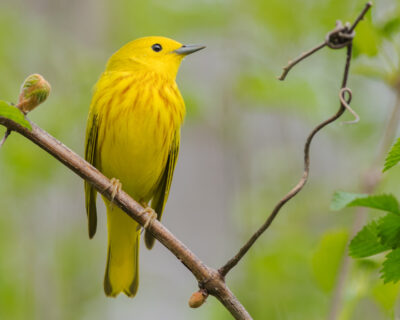
Figure 1a
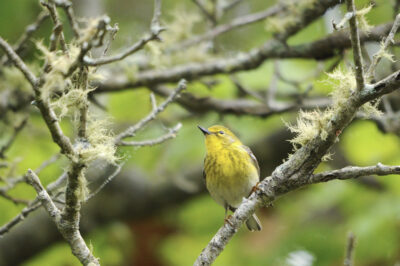
Figure 1b
The yellow bird pictured in Figure 1a is fairly commonly seen and heard in shrubby wetlands or upland thickets and forest edges; territorial individuals will often perch at the top of a shrub or branch out in the open to sing. It forages actively, seeking out insects in vegetation. This bird has completely yellow plumage (this is a general impression, though there are shades of brownish and greenish-yellow), including all tail feathers (no white outer corners like other related species). Males have thin red streaks on the breast, and the females are a duller yellow rather than a golden yellow.
The comparison species in Figure 1b has a similar-shaped bill, yellow eye arcs, and two white wing bars on a grayish wing, as well as white spots in the outer tail feathers. Overall it has a yellow impression, but those patterns can help you distinguish this from the bird in Figure 1a. Habitat is typically pine forests, and this species tends to forage high up in the treetops (making it difficult to see, unlike the bird in Figure 1a). This species forages for caterpillars and other insects, picking prey from bark and needles.
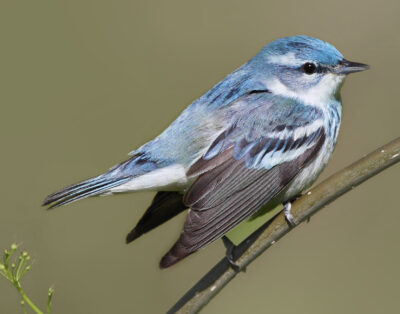
Figure 2a
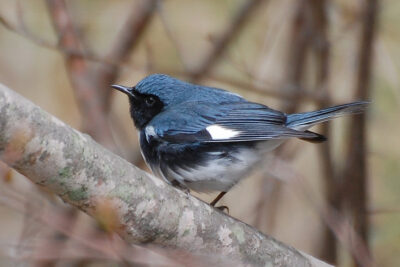
Figure 2b
Males of the species seen in Figure 2a are sky blue and white colors, with two white wing bars and a narrow blue “necklace” or neck band, and have white bellies with blue streaks along their sides. Females are duller and are more bluish-green than sky blue. Habitat is mature, deciduous forests, and this bird spends most of its time in the overstory (treetops), occasionally coming lower to forage for insects in areas with a tree canopy gap. Their song is buzzy and ascending. See if you can pick out the song pattern: three buzzy notes, then four fast warblers, followed by a higher-pitched note at the end.
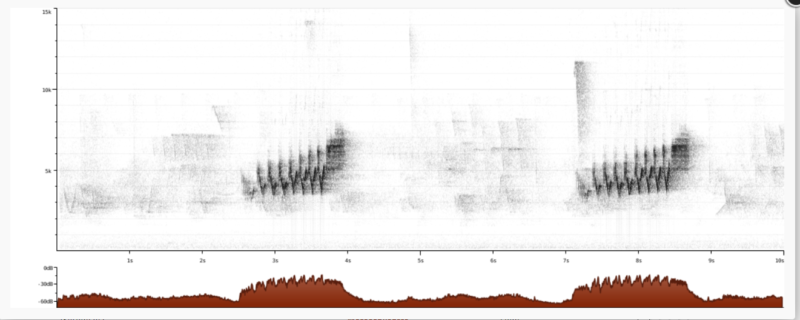
Sonogram for bird species in Figure 2a: XC600733 – by Christopher McPherson, https://www.xeno-canto.org/
In comparison, males of the species displayed in Figure 2b are a darker blue on the head and back, have a black face, and a white breast and belly with black streaking along its sides. Females are a dusky grayish olive color, and like the males, they also have a distinct white patch in the wing. This bird breeds in hardwood forests and tends to nest in dense understory. Their song is somewhat similar between this and the species in Figure 2a at first listen, but check out the sonogram for each. This species has a slower, lazier-sounding song with three to seven buzzy notes rising in pitch, with the last note slurred upwards. The audio recording and sonogram show a quicker rhythm, which is a variation of the song, but listening closely, you may still pick out the differences between this and the species in Figure 2a.
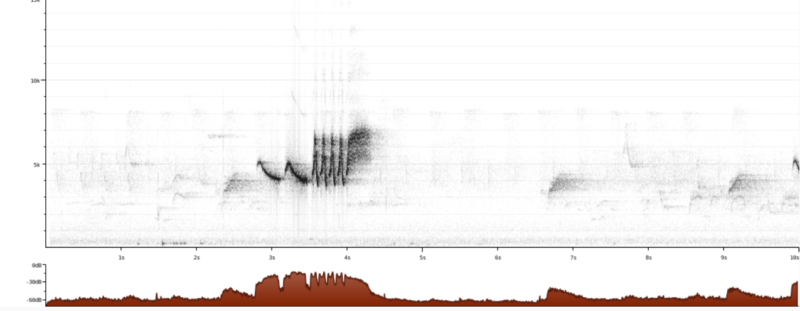
Sonogram for bird species in Figure 2b: XC600523 – by Christopher McPherson, https://www.xeno-canto.org/
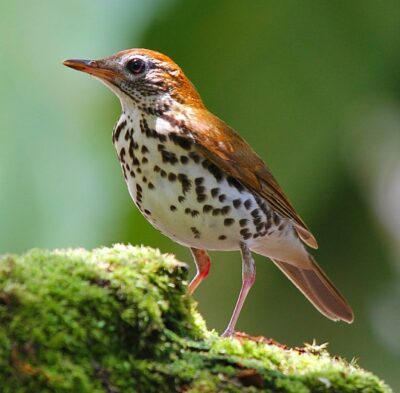
Figure 3a
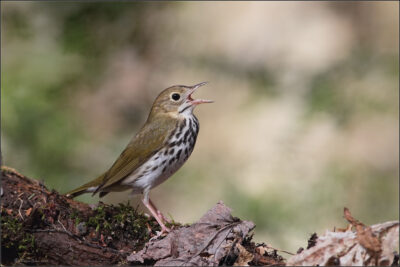
Figure 3b
The species in Figures 3a and 3b are a great comparison as both have an overall brownish look, both have spots or small streaks on their breast and belly, and both spend some (or most) of their time on the forest floor. The bird in Figure 3a generally looks robin-like, and it is a part of the thrush (Turdidae) family. It tends to hold itself with an upright posture (think of those American Robins in mowed yards). Its breast and belly are white with distinct blackish round spots.
Look at some features of the bird in Figure 3b: Its bill is more like a warbler bill — petite and good for picking up small insects (unlike a finch bill, which is great for eating seeds). It has long legs (good for walking on the forest floor) and is well camouflaged. Its underside is white with dark black streaks, not spots (at a glance, this can be confused with spots). This bird also has “racing stripes” on the top of its head, which the bird in Figure 3a lacks.
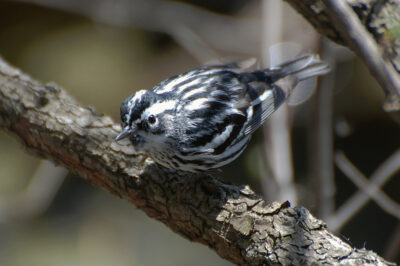
Figure 4a
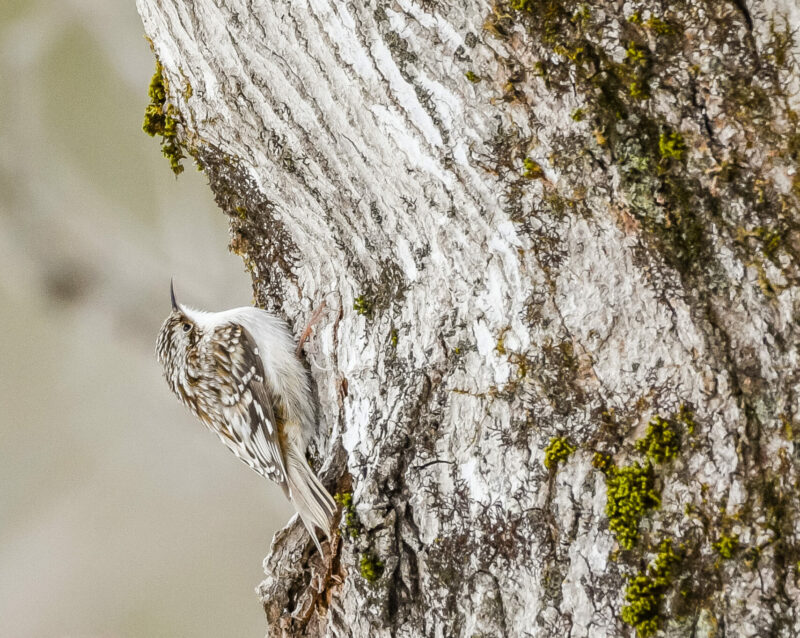
Figure 4b
Both birds in Figures 4a and 4b spend time foraging vertically on tree trunks or upside down on branches. However, the bird in Figure 4a has a very distinct look, with streaks of black and white feathers and a thin narrow bill (great for picking insects out of bark crevices). It is a very vocal bird, frequently singing its high-pitched “squeaky wheel” song.
The bird in Figure 4b has very similar behavior as the bird in Figure 4a, foraging vertically on tree trunks and branches. One key difference is that this bird, unlike the one in Figure 4a, uses its long tail to prop itself against the tree. This species is smaller-bodied, has a slightly curved bill, and is streaky brown on its upper parts with white below.
Now it’s your turn! Take pen and paper with you the next time you watch birds, and jot down some notes. Remember shape/size, color/pattern, habitat, and behavior!
May Event Highlight: Female Bird Day
Female birds have been historically underrepresented in bird counts and bird research. To change this, a group of scientists began Female Bird Day. Help document female birds, female birdsongs, and complex behaviors on May 29-31, 2021. This is important when thinking about bird conservation, as many males and females of Neotropical migrants, such as Golden-winged Warblers, use different habitat areas on their wintering grounds. If only male usage of habitats is studied and then conserved, habitats used by females might be overlooked and not protected.
Helpful reading on describing a bird
Elements of a bird description — Follow these guidelines to help yourself learn more about the bird you are observing and provide adequate details if you happen to be documenting a rare or out-of-season bird.
Happy May birding!
~ Linnea Rowse, Michigan Audubon conservation program coordinator
Featured photo: Blackburnian Warbler © Josh Haas
Answers to bird ID questions:
Figure 1a: Yellow Warbler Photo by Alejandra Lewandowski
Figure 1b: Pine Warbler Photo by Putney
Figure 2a: Cerulean Warbler Photo by Daniel Behm
Figure 2b: Black-throated Blue Warbler Photo by Douglas Leffler
Figure 3a: Wood Thrush Photo by Juan Zamora
Figure 3b: Ovenbird Photo by Daniel Behm
Figure 4a: Black-and-white Warbler Photo by Douglas Leffler
Figure 4b: Brown Creeper Photo by Donna Keller

